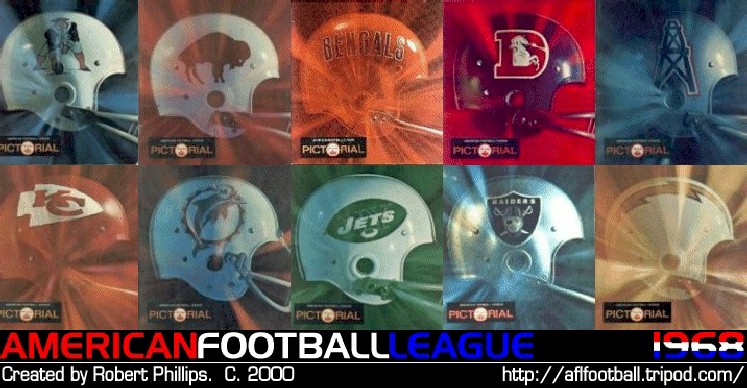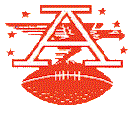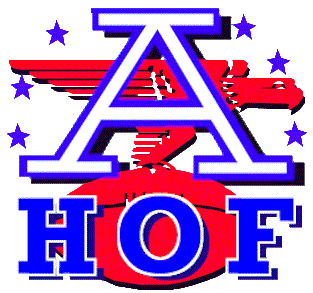|
By Nate Davis, USA TODAY
Seventh in a series exploring the histories of
all 10 AFL franchises as the NFL celebrates the
league's 50th anniversary.
The history of the American
Football League literally begins and ends with the
Kansas City Chiefs franchise.
Lamar Hunt not only founded the
AFL, which began play in 1960, but he also owned the
Dallas Texans, who relocated to Kansas City and became
the Chiefs after the 1962 season.
"Before there was a player, coach
or a general manager in the league, there was
Lamar Hunt," late Boston Patriots owner William
Sullivan said at Hunt's Hall of Fame induction in
Canton, Ohio, in 1972. "Hunt was the cornerstone,
the integrity of the league. Without him, there would
have been no AFL."
The Chiefs concluded the AFL's
10-year run by thumping the heavily favored Minnesota
Vikings 23-7 in Super Bowl IV after the 1969 season. The
AFL officially merged with the NFL before the 1970
season.
In the decade between the Texans'
first game and what remains the
Chiefs' only Super Bowl win, the club reeled off an
AFL-best 87 victories, won a league-record three titles
and developed half a dozen Hall of Famers, all while
bringing innovation and integration to the gridiron,
much of it courtesy of coach
Hank Stram.
Stram found an able triggerman
for his offense in 1962 by throwing a lifeline to
quarterback
Len Dawson, who had been stagnating in the NFL. "A
lot of my skills had eroded after not playing for five
years," says Dawson, who also had been recruited by
Stram to play at Purdue. "(But) he was an excellent
quarterbacks coach. … It was a close bond."
Dawson, who still owns franchise
records for passing yards (28,507) and touchdown passes
(237), knocked off the rust and mastered an offense that
featured such wrinkles as a moving pocket, a litany of
pre-snap movements and multiple formations. His 182 TD
passes between 1962 and '69 are an AFL record.
"As a quarterback, you've got to
have an opportunity to play," Dawson says, explaining
why he failed to flourish in the NFL but saw his career
skyrocket in the upstart establishment. "Back in those
days, quarterbacks didn't get hurt. I never got a true
shot to play."
But even though Stram and a
revitalized Dawson helped engineer a successful title
run in 1962 — the Texans knocked off the two-time
champion Houston Oilers 20-17 in overtime — the club
left
Dallas, to the dismay of many players, according to
Dawson.
"We had guys from the state of
Texas (on the roster) that didn't want to move," he
says. "They wanted the Cowboys to leave."
In an attempt to impede the AFL's
progress into a market thirsty for pro football, the NFL
placed the expansion Cowboys in Dallas in 1960, this
after repeatedly rebuffing Hunt's attempts to bring an
NFL team to the city.
The Texans and Cowboys began
their existence by sharing the Cotton Bowl as their home
venue, and Dawson says the Texans players closely
monitored the Cowboys' progress in what became a fierce
civic rivalry.
And though the Texans went 25-17
in their three seasons and won the '62 AFL title, Hunt
ceded the Dallas market to the Cowboys, who struggled to
go 9-28-3 and didn't sniff the postseason between 1960
and 1962, long before they laid claim to the title of
"America's Team."
"He was more concerned about the
league succeeding," Dawson says of Hunt, who moved his
team north even though his family's lucrative oil
business gave him the financial means to keep the club
in Dallas indefinitely.
But Hunt knew the NFL was trying
to sink the AFL by dominating a shared market — "(They)
tried to kill the league before it started," Dawson says
— so he opted for an untapped one.
The Chiefs went 19-19-4 their
first three years in Kansas City but returned to their
championship form in 1966.
Dawson led the '66 club to an
11-2-1 mark, a second AFL crown and a berth in what
later would be called Super Bowl I.
Few gave the Chiefs any chance
against the Green Bay Packers, a dynasty coached by
Vince Lombardi. But after the first half of the first
AFL-NFL championship game, Green Bay clung to a 14-10
lead.
Then it all unraveled for
Kansas City. Dawson was intercepted by safety Willie
Wood on the fourth play of the third quarter. Wood's
50-yard return to the Kansas City 5-yard line set up a
Green Bay touchdown, and the Packers cruised to a 35-10
victory.
Despite the
Packers'
first-half struggles, Lombardi did little to quell the
notion that AFL football was an inferior product, saying
afterward, "I think the Kansas City team is a real tough
football team, but it doesn't compare with the National
Football League teams."
But Dawson didn't think the gap
between the leagues was all that wide.
"At halftime, I really thought we
could beat these guys," he says. "One mistake by me
turned the whole thing around. That was the ballgame. …
Of all the passes I've thrown, that's the one I'd like
to have back."
The Chiefs got a small measure of
payback in the 1967 preseason, thrashing the NFL's
Chicago Bears 66-24 in Kansas City. "There was some real
animosity and people out to prove something," says
former Chiefs linebacker
Jim Lynch, who was a rookie at the time.
The Chiefs mascot at the time was
a horse named "Warpaint." The gelding would do a
celebratory lap around the field after each touchdown.
"(Bears Hall of Famer Dick) Butkus said we damn near
killed that horse," Lynch says.
However, if the chasm between the
leagues was narrowing on the field, even a successful
AFL team such as the Chiefs often had to resort to
creative means to put fans into the seats.
Rather than relying on the Kansas
City news media for exposure, the Chiefs gladly allowed
Dawson to become a member of it. He served as the sports
anchor on the 6 p.m. and 10 p.m. news on the local ABC
affiliate.
"The Chiefs recommended it,"
Dawson says of a gig that forced him to rush to the
station after practice ended at 5 p.m. to make the 6
o'clock news. "The Chiefs were interested in selling
tickets. … That would never happen today."
Straying from the era's
conventional norms also greatly helped the Chiefs field
a superior product on the field. At a time when many NFL
clubs were still slow to integrate, the Chiefs were
scouting players from historically black colleges.
Defensive tackle Buck Buchanan
(Grambling), linebacker Willie Lanier (Morgan State) and
cornerback Emmitt Thomas (Bishop College) came from
historically black schools before their Hall of Fame
careers in Kansas City.
Other Chiefs came from the more
traditional college pipeline on their way to Canton,
including linebacker
Bobby Bell, who was also African-American, Dawson
and kicker
Jan Stenerud. (Hunt and Stram also are in the Hall.)
"He didn't care what color you
were," Bell says of Stram. "He wanted to know if you
could play. If you could play football, then he wanted
you."
Bell also underscores the social
significance and the long-term impact on pro football
that the Chiefs' equal-opportunity mind-set cultivated.
"That was a time when things
changed," says Bell, who would typically count as many
as 45 black players in the team's training camp. "We
were bringing 'em in from all over. … If it hadn't been
for Lamar Hunt, a lot of players at black schools
(might) still be looking for opportunities."
Lynch had played at Notre Dame,
where his only black teammate was future Hall of Fame
defensive tackle Alan Page. Lynch went to Kansas City
and found himself battling fellow rookie Lanier for the
starting job at middle linebacker in 1967.
Lanier ultimately won the job —
becoming the first black player to start at the position
in the pros — and Lynch settled in at outside
linebacker. But a bond was formed between two men who
would become roommates on the road for the next eight
years and lifelong friends. "It was news back then, but
it shouldn't have been news," Lynch says.
Lynch was in the minority on a
defense that only started three white players. "Bobby
Bell was the best athlete I've ever physically seen,"
Lynch says, "until Bo Jackson came to Kansas City to
play for the Royals."
The Chiefs effectively employed
Stram's stack defense — the linebackers lined up (or
stacked) directly behind the defensive linemen rather
than in the gaps between them — and used a variety of
man-to-man and zone defenses.
By the start of the 1969 season,
everything was in place for a championship run in the
AFL's final season.
But then Dawson went down with a
knee injury in the second game of the regular season.
The defense stepped up while
Dawson recovered.
The unit finished first in yards
and points allowed in the AFL in 1969. It also scored
four touchdowns off turnovers.
"We were probably a team that
proved the axiom that you can't win without great
defense," Lynch says of a starting 11 that featured four
Hall of Famers along with established stars such as
safety Johnny Robinson, end Jerry Mays and nose tackle
Curley Culp, who revolutionized that position.
Bell says the team's weekly goal
was to limit the opposition to one touchdown. The Chiefs
almost succeeded, surrendering 16 touchdowns in 14
regular-season games.
Dawson returned midway through
the '69 campaign, and the team ultimately finished 11-3.
But the Chiefs had to beat the league's previous two
champions, the New York Jets and
Oakland Raiders, on the road to reach
Super Bowl IV.
That path began with a 13-6 win
in New York as the defense grounded
Joe Namath's Jets a year after their landmark Super
Bowl III win against the Baltimore Colts. "The Jets
thought they were gonna repeat," Bell says. "We shut 'em
down."
The Chiefs then beat the Raiders
17-7 for their third AFL crown, avenging their two
regular-season losses to Oakland.
Then it was on to meet the
Vikings. And, oddsmakers aside, many Chiefs players
didn't think Minnesota stood a chance.
"We had a different attitude,"
Dawson says when comparing the '69 Chiefs to the '66
team that lost to Green Bay.
Dawson remembers telling his
roommate, Robinson, "We're gonna put some points on the
board."
Robinson's response?
"We might shut 'em out," Dawson
says.
The Chiefs nearly did in their
decisive victory, a triumph that would even the
championship scoreboard between the AFL and NFL at two
wins apiece.
"We wiped 'em out, manhandled
them," Bell says.
Everything Stram tried seemed to
work that day. His famous "65 toss power trap" call,
which resulted in a touchdown, was forever immortalized
by NFL Films.
"That was coach Stram, whether he
was wired or not," Bell says of the famous play call.
"Everybody remembers that: 65 toss power trap. Everybody
talks about it. … It worked, oh my gosh — like the
movies."
Everything else worked, too. The
defense forced three fumbles and picked off three
passes. Stenerud kicked three field goals. And Dawson
was named the game's MVP.
"With the merger coming, it
proved we had arrived," Dawson says. " 'Mickey Mouse
league' is what they used to call us. … (But) we
dominated that football team."
Just like the Chiefs dominated
the AFL for most of the decade, a time that many of the
league's players, Dawson chief among them, look back
upon with fondness.
"All of us owe a great deal of
gratitude to Lamar Hunt," Dawson says, "because of his
dream to form a league and own a football team." |

















